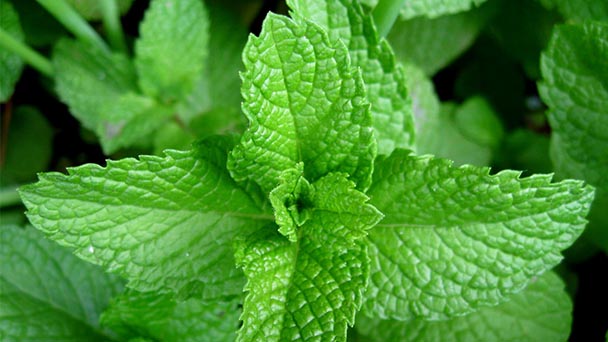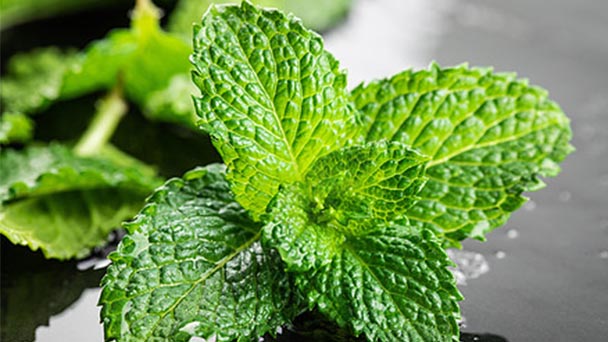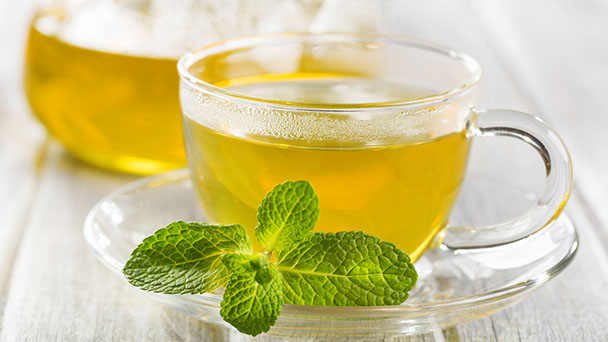Mint Profile
Written by Joy
Sep 27 2020

Common names of Mint is earth mint, water mint, elderberry, water mother, swollen swelling, wild dan grass, nocturnal odor, southern mint, wild mint. It belongs to the Lamiaceae plant, which belongs to other dry whole plants, and is a kind of aromatic crop with special economic value. The whole plant is green and aromatic. Opposite leaves, small lavender flowers, lip-shaped, small dark purple-brown fruit.


The pedicel is slender, 2.5 mm long, puberulent or nearly glabrous. The calyx is tubular and bell-shaped, about 2.5 mm long, puberulent and glandular on the outer surface, glabrous on the inner surface, 10-veined, inconspicuous, calyx teeth 5, narrow triangular subulate, apex long acute, 1 mm long. The corolla is lavender, 4 mm long, slightly puberulent on the outside, puberulent on the inner surface below the throat. The crown is 4-lobed, the upper lobes are 2-lobed at the apex, larger, and the remaining 3 lobes are nearly equal in size, oblong, The apex is blunt. Flowering period from July to September, fruit period in October.
rhizomes germinate at 5℃-6℃, the suitable temperature for plant growth is 20℃~30℃, and the underground rhizomes can survive the winter safely at -30℃~20℃. Mint is born in rivers and ditches or in wet mountains and plains,now mostly grown by medicinal farmers.


Mint morphological characteristicsMint growth habitMint growing environment and distributionMint efficacy and roleMimosa cultivation
Mint morphological characteristics
Mint leaves are oblong-lanceolate, lanceolate, elliptic or ovate-lanceolate, sparsely oblong, 3-5 cm long and 0.8-3 cm wide. The tip of the mint is sharp, the base is wedge-shaped to nearly round, the edge is sparsely thick and serrated above the base, the lateral veins are about 5-6 pairs, and the middle rib is slightly concave on the top and the bottom is prominent, and the top is green. The rest of the veins are densely sparsely puberulent, or the rest except for the veins is nearly glabrous, light green on the top, usually densely puberulent along the veins; petioles are 2-10 mm long, concave and dorsal, and puberulent .The pedicel is slender, 2.5 mm long, puberulent or nearly glabrous. The calyx is tubular and bell-shaped, about 2.5 mm long, puberulent and glandular on the outer surface, glabrous on the inner surface, 10-veined, inconspicuous, calyx teeth 5, narrow triangular subulate, apex long acute, 1 mm long. The corolla is lavender, 4 mm long, slightly puberulent on the outside, puberulent on the inner surface below the throat. The crown is 4-lobed, the upper lobes are 2-lobed at the apex, larger, and the remaining 3 lobes are nearly equal in size, oblong, The apex is blunt. Flowering period from July to September, fruit period in October.
Mint growth habit
Mint is highly adaptable to environmental conditions and can grow in areas below 2100 meters above sea level. However, it likes a sunny, warm and humid environment, therhizomes germinate at 5℃-6℃, the suitable temperature for plant growth is 20℃~30℃, and the underground rhizomes can survive the winter safely at -30℃~20℃. Mint is born in rivers and ditches or in wet mountains and plains,now mostly grown by medicinal farmers.
Mint growing environment and distribution
Mint is widely distributed in the temperate regions of the northern hemisphere and is distributed throughout China. There are many cultivation areas in China, among which Jiangsu and Anhui are traditional authentic production areas, but the cultivation area is declining. Tropical Asia, the Russian Far East, North Korea, Japan, and North America (Mexico in the South) also exist. Peppermint is a long-day crop, which likes sunshine. Long sunshine can promote the flowering of peppermint and facilitate the accumulation of peppermint oil and menthol.Mint efficacy and role
Peppermint has both medical and edible functions. The main edible parts are stems and leaves. It can also be squeezed into juice. In food, mint can be used as a flavoring agent, as a spice, and can also be used with wine and tea. In addition, peppermint stems and leaves have a special fragrance, which can be used to make chewing gum, toothpaste, etc., to cool and refresh and relieve fire. Peppermint can be used to make honey. Its honey color is deep, dark amber, and has a strong mint special smell. Peppermint is a commonly used Chinese medicine in China. The young stem tip can be used as a vegetable, and the whole plant can be used as a medicine to treat colds, fever, sore throat, headache, red eye pain, muscle pain, etc. Peppermint contains menthol, which can freshen breath and has a variety of medicinal properties, can relieve abdominal pain, and also has antiseptic and sterilization, stomach, and digestive functions. Large amounts of peppermint can cause insomnia, but small doses can help sleep.Mimosa cultivation
The soil requirements are not strict, except for the overly acid and overly alkaline soils, it can be cultivated. It is better to choose scattered land, such as ponds, houses, and drains, that have drainage and irrigation conditions and sufficient sunlight. The soil is fertile and the terrain is flat. It is not easy to plant on sandy soil, land with insufficient sunlight, drought, and water accumulation. The land where mint has been planted can only be replanted after three years of leisure. The yield is affected by residual roots underground. Soil preparation, deep plowing, applying decomposed compost, soil miscellaneous manure, superphosphate, bone meal, etc. as base fertilizer, 37500-45000 kg per hectare, raking thinly, shallowly hoeing, turning the fertilizer into the soil, crushing the soil, and raking it flat. The border is 200 cm wide.Latest Updated
- Benefits of Bugleweed - 7 Science-backed Health Benefits
- Bugleweed Dangers & Side Effects - Is It Poisonous?
- How to Plant Evergreen Trees - What You Should Know
- When to Plant Evergreens - Grow Guide for Evergreen Trees
- 12 Wonderful Evergreen Shrubs for Your Garden
- 12 Popular Evergreen Plants with Pictures for Beginners
- When And How To Prune A Lilac Bush Like a Pro
- How to Grow & Care for Lilac Vine (Hardenbergia Violacea)
- Japanese Lilac Tree (Syringa Reticulata) Care & Propagation Guide
- Shumard Oak Pros and Cons - What to Know
Popular Articles
- Winter maintenance of Antirrhinum Majus
- How to Grow Terminalia Mantaly Tree
- How to Grow and Care for Crossostephium Chinense
- How to grow Antirrhinum Majus in spring
- Peristeria Elata (Dove Orchid) Profile: Info & Care Guide
- Underwatered Snake Plant (Sansevieria Trifasciata) - Signs And How To Fix
- How to Care for Brazilian Jasmine Plant (Mandevilla Sanderi)
- How to Grow & Care for Graptopetalum Purple Delight in Summer
- Rosa Chinensis (China Rose): Plant Growing & Care Tips
- How to Care for Baby Sun Rose (Aptenia Cordifolia)